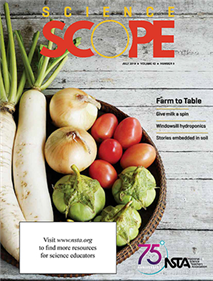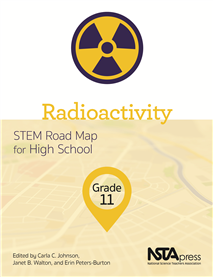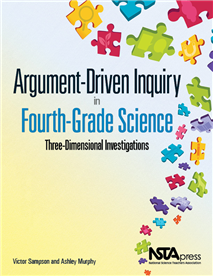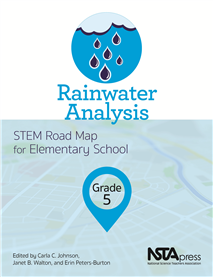All Resources
Journal
If you ask students where their food comes from, they will most likely answer, “the grocery store.” Raise student awareness of the agricultural industry and our food supply chain with the articles found in this issue of Science Scope....
Web Seminar
Are you a K-12 teacher who works near a Shell asset? Join us on Wednesday, December 4, from 6:30 to 8:00 pm ET to learn how you could win a science classroom makeover. ...
Virtual Conference
Shifting to the NGSS: Professional Book Study for Secondary School Teachers
Are you an secondary (grades 6-12) school teacher working to enhance your knowledge and understanding of the Next Generation Science Standards (NGSS)? Register to participate in the Shifting to the NGSS: Professional Book Study, taking place in Septe...
Journal Article
When ExpandED Schools, a nonprofit based in New York, began planning a new STEM (science, technology, engineering, and math) initiative three years ago, it started by taking a closer look at the existing science programming happening in its network...
By Lizzie Murchison and Emma Banay
Journal Article
Innovation and progress in the science, technology, engineering, and math (STEM) workforce is critical to the growth of the United States in the global economy (NRC 2007). Men are more likely to pursue a degree in STEM fields, with almost 27% of ma...
By Sarah Rhodes-Ondi, and Maryam Ghadiri
Journal Article
Using Virtual Reality in the Classroom for Students on the Autism Spectrum
Virtual reality has seen rapid development in the first part of the 21st century, although it has been around for many years. Remember the old ViewMasters? And who could forget the first time a sea monster reached out to grab you while you were wea...
By Wyayn Rasmussen, and Kate Drechsler
eBook
Radioactivity, Grade 11: STEM Road Map for High School (e-book)
What if you could challenge your 11th graders to figure out the best response to a partial meltdown at a nuclear reactor in fictional Gammatown, USA? With this volume in the STEM Road Map Curriculum Series, you can!br> Radioactivity outlines a jou...
Book Chapter
The guiding question of this investigation is, How does changing the speed of a marble affect the energy of that marble? In this lesson, students will need to figure out how changing the speed of a moving marble (a cause) affects the energy that the...
Book Chapter
Energy Transfer Through Collisions
The guiding question of this investigation is, How does the energy of a moving ball change after it collides with objects that have different masses? In this lesson, the goal is to figure out how the energy of a moving billiard ball will change whe...
Book Chapter
Energy Transfer Between Liquids
The guiding question of this investigation is, How can we predict how much the temperature of 100 ml of water will change when we add different amounts of hot water to it? In this lesson, the goal is to figure out a way to predict how much the temp...
Book Chapter
The guiding question of this investigation is, How does the distance between a light source and an object affect the amount of energy an object receives from the light source? In this lesson, the goal is to figure out how the amount of energy an obj...
Book Chapter
The guiding question of this investigation is, How does adding more batteries or bulbs to a closed circuit affect the brightness of a single bulb within that circuit? In this lesson, the goal is to figure out how the addition of more batteries and ...
Book Chapter
Energy Transfer by Electric Currents
The guiding question of this investigation is, How can we make an electric car move faster? In this lesson, students will apply what they know about electric currents, closed circuits, and the transfer of energy to create an electric car. Then figu...
Book Chapter
The guiding question of this investigation is, How does changing the mass of an object that is dropped into water affect the height of the resulting wave and the position of a floating toy boat? In this lesson, the goal is to figure out how the mas...
Book Chapter
Characteristics of Sound Waves
The guiding question of this investigation is, How can we use the properties of waves to explain different sounds? Sound waves are created when a disturbance travels through a substance or material from one place to another. In this lesson, student...
Book Chapter
The guiding question of this investigation is, What is the relationship between the location of an object and the location of its image in a mirror? In this lesson, the goal is to figure out how to predict where an image of a pencil in a mirror wil...
Book Chapter
Patterns and the Transfer of Information
The guiding question of this investigation is, How can we use an electric circuit to accurately transfer information about the content of a picture? To accomplish the goal In this lesson, students will use what they know about electric currents and...
Book Chapter
The guiding question of this investigation is, How does water move from the roots to the leaves of a plant? In this lesson, the goal is to figure out how water moves into, within, and out of a plant while traveling from the roots to its leaves. To a...
Book Chapter
The guiding question of this investigation is, How should we classify the unknown organisms? In this lesson, the goal is to figure out how to classify an unknown animal based on the type of food it eats and how the structure of an animal’s skull ...
Book Chapter
The guiding question of this investigation is, What type of environmental conditions do mealworms seek out? In this lesson, the goal is to figure out the types, as well as how mealworms respond to the different types of environmental conditions the...
Book Chapter
The guiding question of this investigation is, Why can we see the roots of trees that grow near rivers or streams? Roots of trees are usually underground. In this lesson, the goal is to figure out why trees that grow near rivers or streams often hav...
Book Chapter
The guiding question of this investigation is, Why do large waves often block the entrance to some harbors in New Zealand? In this lesson, the goal is to figure out how nautical charts can be used to locate different land and water features on Eart...
Book Chapter
This lesson provides a basic introduction to nuclear chemistry and exponential functions. Students learn about the discovery and history of radioactive elements and the scientific and societal implications of these discoveries. They model natural rad...
Book Chapter
In this lesson, students explore the process of nuclear fission from historical, scientific, and environmental perspectives. They focus on how nuclear fission is used in pressurized water reactors (PWRs), the type of nuclear reactors most commonly us...
Book Chapter
Nuclear Fusion: Harnessing the Power of the Stars
In this lesson, students consider nuclear fusion and its potential to meet human energy needs in the future, as well as the substantial technology and engineering challenges associated with creating fusion reactions. They compare and contrast the pro...
Book Chapter
In this lesson, students continue their consideration of nuclear fission and its practical application in power plants by examining the events leading to the 1979 Three Mile Island (TMI) nuclear accident and the response. They analyze a multidiscipli...
Book Chapter
The Gammatown Crisis Challenge
In this lesson, students synthesize their learning from the previous lessons to address the module’s culminating challenge—the Gammatown Crisis Challenge. Student teams are each challenged to assume the role of one of several stakeholder groups t...
Book Chapter
This lesson introduces students to the module challenge—the Rainwater Roundup Challenge. Through a slideshow and water activity, students learn about water as a scarce natural resource. As a foundation for understanding the relationship between sta...
Book Chapter
In this lesson, students continue to explore rainwater by examining the interconnectedness of Earth’s spheres. Students investigate water handling features at home and in school while conducting surveys. They learn about the need to improvise to bu...
Book Chapter
In this lesson, students continue to address the Rainwater Roundup Challenge as they determine the best shape and dimensions for a storage container for rainwater collection. Students compare their rain gauge data with rainfall data from previous yea...
Book Chapter
The Rainwater Roundup Challenge
This lesson begins with a student email to the teacher for the class bringing to their attention a big problem with the rainwater-recycling project—gravity! Students are challenged to help create solutions for this problem. To move forward with the...
NSTA Press Book
Radioactivity, Grade 11: STEM Road Map for High School
What if you could challenge your 11th graders to figure out the best response to a partial meltdown at a nuclear reactor in fictional Gammatown, USA? With this volume in the STEM Road Map Curriculum Series, you can! Radioactivity outlines a journe...








